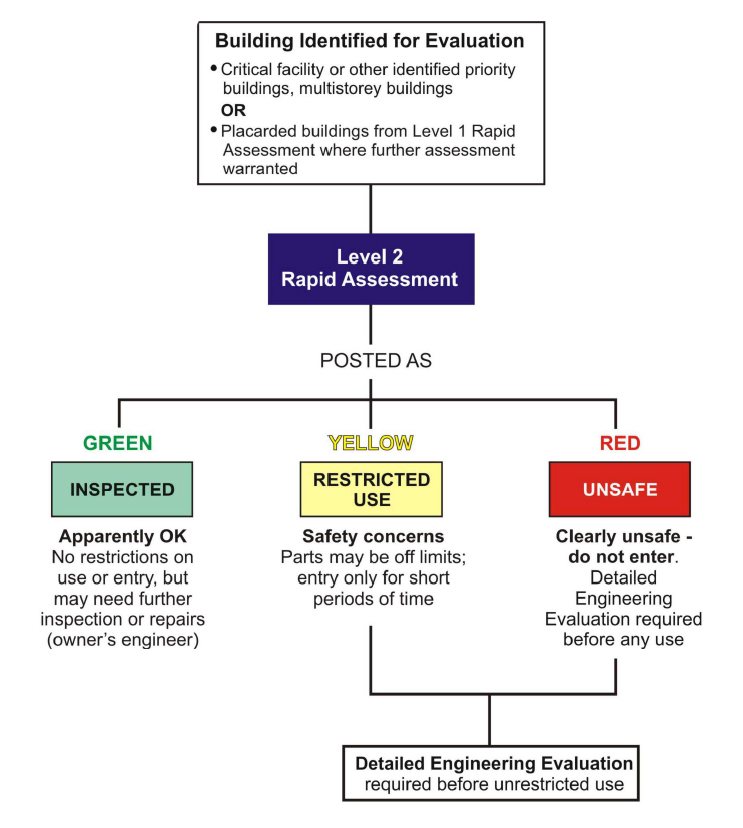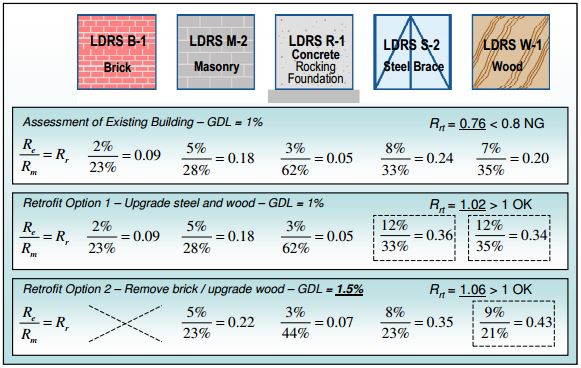Brainstorming: Looking at previously successful projects, to use as an example for our own.
This week we contacted our client, Dorit Mason to set up a meeting. In this meeting we will discuss the goals of our project, as well as key negotiable and non-negotiable constraints. We will also use this time to learn more about the scope of our project and how we will be interacting with NSEMO over the coming months.
In preparation for our meeting, this week we researched other Rapid Damage Assessment programs. Our team examined two programs: the first was New Zealand’s “Building Safety Evaluation”, and the second was the “Toolbox Method Of Combining Systems” by UBC and APEGBC.
New Zealand’s Building Safety Evaluation is broken into two steps, and is done by trained engineers or by contractors in the construction industry. The inspection is composed of an initial “level one assessment” and a second “level two assessment” for important buildings and for buildings that did not pass the level one assessment. The combination of these two inspections allows for trained professionals to use their time efficiently and evaluate structures in a short period of time. New Zealands’s Building Safety Evaluation has many important points to consider; it’s algorithmic approach to disaster relief was of particular interest to our team.
The second chosen project was completed by engineers and geoscientists at UBC and APEGBC in response to the government of BC realizing that various other buildings of importance required seismic upgrades. The plan detailed a three-pronged approach called the Toolbox Method of Combining Systems. The Toolbox Method takes into account the combination of individual lateral systems to the overall structure.
The three steps of this method are:
1. The Assessment of the existing structure
2. The considerations of upgrading steel and wood
3. The considerations of removing brick, masonry, and clay walls
The toolbox method takes into consideration the soil present, the seismic risk, and the structural importance into calculations. Although this method was originally meant for retrofitting buildings in preparation of seismic activity, it easily could be applied to post-disaster assessment situations.
While it is too soon to delve deeply into the technical details of our own RDA program, the research we completed this week will be invaluable for the future of our project. We feel that this is a promising start and look forward to meeting with NSEMO to discuss technical details of the project.


This is looking great. Nice work and an interesting read.
Make sure you have your questions ready for Ms Mason. Also, I suggest that, after your meeting, you send her a follow-up e-mail describing the outcomes of the meeting and asking her to confirm these outcomes or revise them according to her understanding of the meeting.
Regards,
SN
nesbit
2 Feb 13 at 6:14 pm
I am glad you guys are diving into the past research completed.
Maybe one of the questions you guys can pose to Ms. Mason is that if she would like to see something done differently with your RDA program that maybe was not done so well, or was not clear in the past research that has been completed.
We can talk more about some of the questions to ask and how to approach it next week before your team meeting with Ms. Mason on Feb 13th.
Cheers,
Arman
aaaaa
3 Feb 13 at 1:49 pm